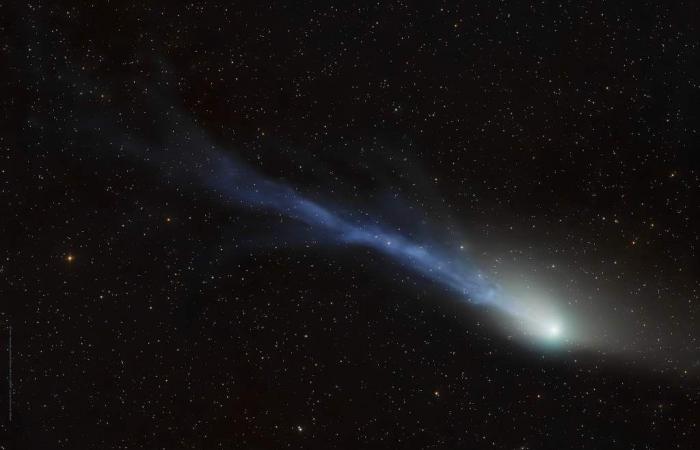Tomorrow, June 30, 2024, it will reach perihelion (i.e. the position in orbit of closest approach to the Sun) the kite 13P/Olbers, discovered on March 6, 1815 by the German astronomer Heinrich Wilhelm Olbers. It is one of the oldest and most studied periodic comets, belonging to the Halley comet family.
13P/Olbers has an orbital period of about 69 years, making it a regular reappearance in Earth’s skies. Its eccentric orbit takes it to considerable distances from the Sun, beyond the orbit of Neptune, before bringing it closer again, making it visible from Earth.
Thanks to its nucleus composed of ice, dust and rocky material, the comet develops very bright hair and tail when it approaches the Sun. Scientific observations by 13P/Olbers have revealed the presence of compounds such as water, carbon monoxide, methane and ammonia, providing important clues to the origin and evolution of the Solar System. Furthermore, the study of dust particles released from the nucleus has enriched our understanding of the interactions between comets and the solar wind.
Where and how to observe it?
According to estimates, near perihelion, 13P/Olbers should reach a magnitude of about 6.5, thus becoming visible with the aid of a small telescope or binoculars.
However, comets are known for their extremely unpredictable naturewhich makes them particularly fascinating celestial objects to study. For this reason, it must be taken into account that their brightness in the next few days may not match the expected one. During its approach to the Sun, due to the intense stress to which the nucleus is subjected, the comet could disintegrate, with a consequent decrease in magnitude.
In the case of comets that are not bright enough to be observed with the naked eye, the use of a telescope can certainly help us observe the coma of gas and dust that surrounds the nucleus. These days we can observe just after sunset, just above the horizon, in the constellation Lynx. Thanks to sites like TheSkyLive it is possible to follow its position in the sky in real time, so you can find it easily.
You might be interested in –> The complete guide to choosing a telescope
How to photograph it?
To further study this comet, the astronomical photography it is the key to being able to see even the faintest details of this celestial object.
To photograph a comet you need a telescope, a motorized mount capable of compensating for the earth’s rotation and a camera. Usually special cameras with cooled sensors are used, but even a simple reflex can give excellent satisfaction.
If you don’t have a telescope, even with just a camera you can take wide-field images of the sky. And if the comet has a long enough tail, you can get some great images that way too.
For comparison, in the article at the following link you can see some of the best images of comet 12P/Pons-Brooks with an explanation of the techniques used to create them.
Here instead we tell all the comets of 2024 –> 2024 will be the year of comets. Here’s why
© 2024 Astrospace.it All rights reserved. This article may be reproduced or distributed in full only with the written authorization of Astrospace.it or partially with the obligation to cite the source.






